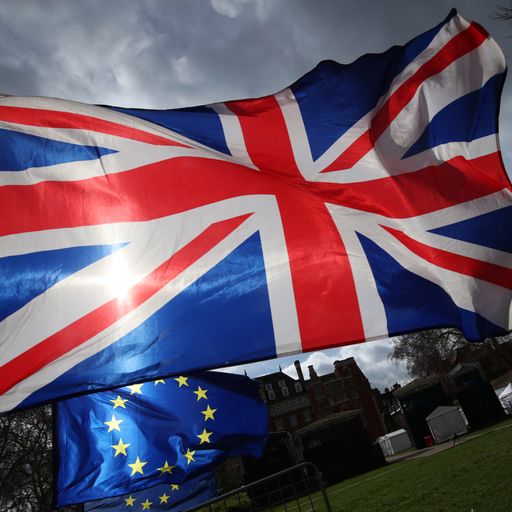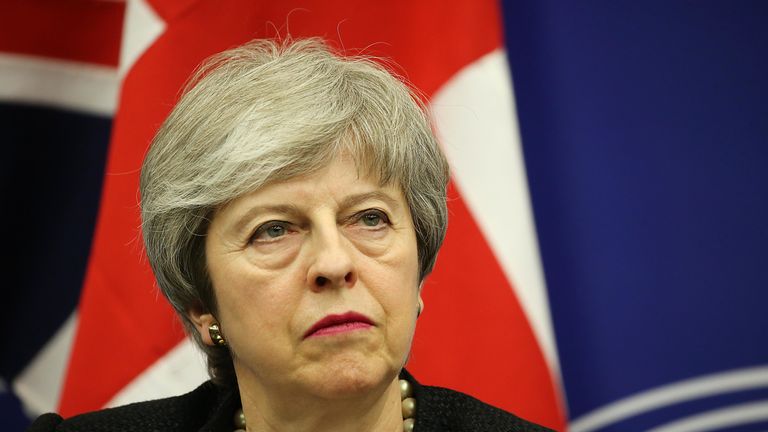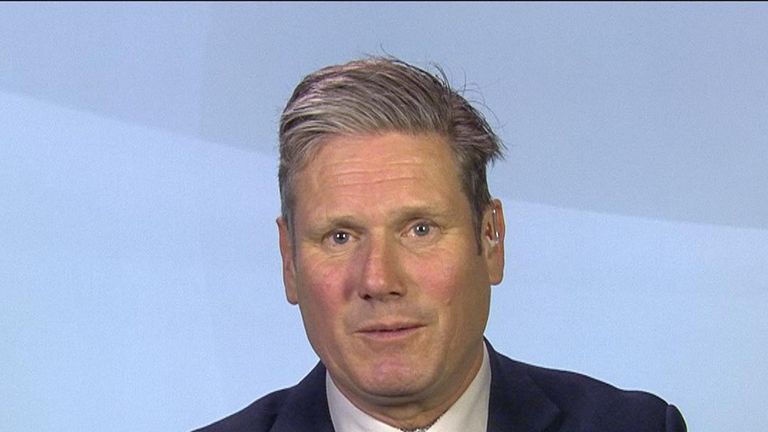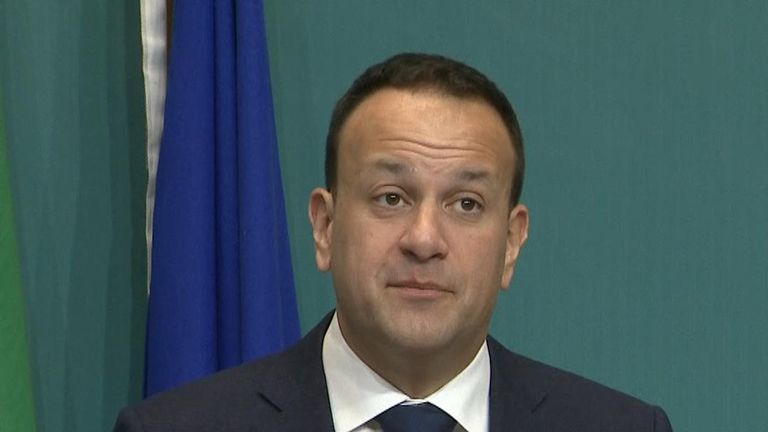May's Brexit assurances: What are the key terms?

Tuesday 12 March 2019 15:18, UK
Theresa May insists she has secured "legally binding" changes to her Brexit deal which MPs emphatically voted down in January.
:: LIVE: May's deal hangs in the balance
The prime minister reached an 11th-hour agreement with the European Union in Strasbourg on Monday after late night talks with European Commission President Jean-Claude Juncker.
She said she "passionately believed" the additional agreements addressed concerns raised by MPs who feared the backstop would effectively keep the UK in a customs union with the EU indefinitely.
However, crucially, Mr Juncker said the arrangement reached "compliments the Withdrawal Agreement without reopening it".
Mrs May returned from Strasbourg with three key elements added to her Brexit deal, so what exactly was agreed and what happens next?
:: Joint instrument
The biggest sticking point in the Withdrawal Agreement is the Northern Ireland backstop, which is designed to avoid a hard border on the island of Ireland should talks on a future EU-UK trade relationship break down.
Attorney General Geoffrey Cox's advice on the previous version of the deal could not rule out the UK being trapped "indefinitely" in the backstop, which would tie the UK closely to Brussels' rules and tariffs.
Firstly, under a "legally binding joint instrument", the prime minister has not secured a time limit, or end date to the backstop.
The EU said all along that a time limit would invalidate the backstop as an insurance policy, and this remains their stance.
However, the legal add-on agreed by Mrs May and Mr Juncker last night means the EU cannot act with the intent of making the backstop last indefinitely.
If the UK feels the EU is not sticking to its commitment to try to ensure the backstop is temporary, the UK could trigger an arbitration process, which might decide to suspend the backstop.
The prime minister stresses this instrument is legally binding - as it will have equal force to the withdrawal agreement and will be lodged alongside it as a treaty at the United Nations.
But, it's important to remember that the Withdrawal Agreement itself has not changed.
:: Joint statement
An additional joint statement has also been agreed to go alongside the political declaration on the future trade deal between the UK and EU after Brexit.
This commits both parties to "work speedily" on alternative arrangements to be in place by the end of 2020, so the backstop does not need to be triggered.
If these arrangements - technological and other measures to avoid border infrastructure on the island of Ireland - are in place by the end of next year, it will mean the backstop won't be necessary.
This work on alternative arrangements is of great significance to Brexiteers, and they will be pleased to see it mentioned prominently.
:: Unilateral declaration
Finally, the government has issued a "unilateral declaration" outlining its own interpretation that there would be nothing to stop the UK from leaving the backstop, if talks on the future relationship with the EU broke down.
:: What is the attorney general's legal opinion?
This is what Mr Cox had to say about the "joint instrument" and the "unilateral declaration" with regards to the backstop:
"I now consider that the legally binding provisions of the Joint Instrument and the content of the Unilateral Declaration reduce the risk that the United Kingdom could be indefinitely and involuntarily detained within the Protocol's provisions at least in so far as that situation had been brought about by the bad faith or want of best endeavours of the EU."
And on the legal risk, he added: "...the legal risk remains unchanged that if through no such demonstrable failure of either party, but simply because of intractable differences, that situation does arise, the United Kingdom would have, at least while the fundamental circumstances remained the same, no internationally lawful means of exiting the Protocol's arrangements, save by agreement."
So, in other words, nothing has really changed.
His legal advice on the agreement reached between Mrs May and Mr Juncker, Mr Cox said the new provisions "reduce the risk" of the UK being "indefinitely and involuntarily" held in the backstop.
But he also said that "the legal risk remains unchanged" and that the UK would have no legal means of exiting the backstop without the EU's agreement.
:: What will MPs be voting on?
Mrs May believes the three new documents will give MPs the legally-binding reassurances they require to approve her Withdrawal Agreement and Political Declaration on the future UK-EU relationship.
The motion that MPs will vote on at 7pm tonight states that was agreed last night "reduces the risk the UK could be deliberately held in the Northern Ireland backstop indefinitely".
Significantly, however, it doesn't eliminate the risk.
Everything hinges on what MPs make of the attorney general's legal advice, with Mr Cox having told them it is a "political judgement" as to whether they believe the UK will be trapped indefinitely in the backstop.
Ahead of the vote on Mrs May's agreement, MPs will also likely vote on a series of amendments to the prime minister's motion.
These include efforts to force a second EU referendum by anti-Brexit MPs.
:: Brexit Crisis Live: Watch Paste BN' special programme from 6pm as MPs vote on May's amended deal






